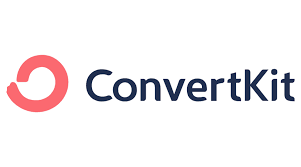Welcome to the ultimate showdown between two of the most popular email marketing tools in the game – ConvertKit and Benchmark Email. In 2024, the battle for the best email marketing tool is fiercer than ever, and we’re here to dissect, analyze, and compare these two giants to help you make the right choice. Whether you’re a small business owner, a blogger, or a marketing guru, this article is your one-stop guide to understanding which tool can elevate your email marketing strategy. Let’s dive in without any further ado, shall we?
| ConvertKit | Benchmark Email |
|---|---|
 |  |
| G2 Score – 4.4 out of 5 stars | G2 Score – 4.3 out of 5 stars |
| TrustRadius Score – 8.8 out of 10 | TrustRadius Score – 6.5 out of 10 |
User-Friendliness: Navigating Through Simplicity and Complexity
In the world of email marketing, the ease of use is not just a convenience; it’s a necessity. After all, time is money, and you don’t want to spend all day figuring out how to send an email. Let’s break down how ConvertKit and Benchmark Email stack up in terms of user-friendliness.
ConvertKit: Simplicity Meets Elegance
ConvertKit has always prided itself on its straightforward and intuitive interface. It’s designed for creators, bloggers, and small businesses who need a no-fuss platform. From setting up an account to launching your first email campaign, ConvertKit makes it all seem like a breeze. The dashboard is uncluttered, with clear, actionable steps to get you started. Whether you’re crafting an email, segmenting your audience, or analyzing your campaign’s performance, ConvertKit ensures that you’re never overwhelmed.
One of the standout features of ConvertKit is its visual automation builder. It allows you to create complex email sequences with simple drag-and-drop actions. This feature is particularly useful for those who want to set up automated email sequences but are intimidated by the technicalities. ConvertKit’s automation builder makes it easy to visualize the journey you want your subscribers to take, from the welcome email to the final call to action.
Benchmark Email: Where Power Meets Flexibility
On the flip side, Benchmark Email offers a more robust platform, catering to businesses that require a little more firepower in their email marketing tools. Don’t get me wrong; Benchmark is still user-friendly, but it comes with a steeper learning curve compared to ConvertKit. Once you get the hang of it, though, you’ll appreciate the flexibility and depth it offers.
Benchmark’s email editor is a thing of beauty. It offers a wide range of templates and customization options, allowing you to create emails that align perfectly with your brand’s aesthetic. The drag-and-drop editor is intuitive, making it easy to add images, buttons, and social media links. For those who are a bit more adventurous, Benchmark also allows you to dive into the HTML code, offering an extra layer of customization.
In terms of automation, Benchmark Email packs a punch. It offers a variety of automation options, including triggered emails based on subscriber actions, time-based automations, and even the ability to segment your audience based on their interaction with your previous emails. This level of detail in automation allows for highly targeted and effective email campaigns.
The Verdict on User-Friendliness
If you’re just starting out or prefer a more straightforward approach to your email marketing, ConvertKit is your go-to. Its ease of use and visual automation builder make it an excellent choice for those who want to set up campaigns quickly and efficiently. However, if you’re looking for a platform that offers more advanced features and customization options, and you don’t mind a bit of a learning curve, Benchmark Email is the way to go.
Email Automation Capabilities
Automation features in an email marketing tool can drastically improve the efficiency and effectiveness of your campaigns. By automating repetitive tasks and tailoring messages to specific segments of your audience, you can enhance engagement and save valuable time. Let’s compare how ConvertKit and Benchmark Email handle automation and workflow.
ConvertKit: Simplifying Automation for Creators
ConvertKit’s automation capabilities are designed with simplicity and effectiveness in mind. Their visual automation builder is a standout feature, allowing users to easily create complex email sequences with drag-and-drop actions. This intuitive interface is perfect for those who are new to email automation or prefer a more straightforward approach.
ConvertKit’s automation tools are particularly useful for setting up automated sequences such as welcome emails, nurture sequences, and sales funnels. The platform also allows for easy segmentation of your audience based on their actions, so you can tailor your emails to specific groups, enhancing personalization and relevance.
Benchmark Email: Advanced Automation for Detailed Campaigns
Benchmark Email offers more advanced automation features, suitable for businesses looking for granular control over their email campaigns. Their automation capabilities include triggers based on subscriber actions, time-based automations, and detailed segmentation options.
Benchmark’s strength lies in its ability to automate complex email sequences and workflows. You can create highly customized paths for different segments of your audience, ensuring that each subscriber receives the most relevant and engaging content. This level of detail in automation makes Benchmark Email a powerful tool for businesses that require sophisticated email marketing strategies.
The Verdict on Automation and Workflow
Both ConvertKit and Benchmark Email offer strong automation features, but they cater to different needs. ConvertKit’s visual automation builder and simple segmentation make it an excellent choice for creators, bloggers, and small businesses who need effective automation without complexity. This approach allows for efficient management of subscriber journeys, making it easier to engage and convert your audience.
Benchmark Email, with its advanced automation capabilities, is more suitable for larger businesses or those with complex email marketing needs. The platform’s detailed segmentation and customizable triggers provide the flexibility to create highly targeted and sophisticated email campaigns.
Pricing and Affordability: Finding the Best Value
When choosing an email marketing tool, pricing is a major consideration. You want a service that not only fits your budget but also offers value for your investment. Let’s compare the pricing structures of ConvertKit and Benchmark Email and see which offers more bang for your buck.
| ConvertKit | Free Plan: Offers basic features for up to 1,000 subscribers, including email broadcasts, landing pages, and forms. Creator Plan: Starting at $29/month for up to 1,000 subscribers, including automation and third-party integrations. The price increases with more subscribers. Creator Pro Plan: Starting at $59/month for up to 1,000 subscribers, adding advanced features like newsletter referral system, subscriber scoring, and advanced reporting. |
| Benchmark Email | Free Plan: Offers basic email marketing features with a subscriber limit and Benchmark branding. Pro Plan: Pricing starts at $13/month for 500 subscribers and includes advanced features like automation, A/B testing, and targeted emailing. The price increases based on the number of subscribers. |
ConvertKit: Transparent Pricing for Creators
ConvertKit has a straightforward pricing model based on the number of subscribers you have. They offer a free plan for beginners with up to 1,000 subscribers, which includes basic features like email broadcasts and landing pages. As your subscriber list grows, you move up to their paid plans, which offer more advanced features like automation, integrations, and premium support.
One of the highlights of ConvertKit’s pricing is its transparency. There are no hidden costs or unexpected charges. As your subscriber count increases, you know exactly how much you’ll be paying, and what additional features you’ll be getting. This makes budgeting easier and ensures you’re not paying for features you don’t need.
Benchmark Email: Flexible Plans for Diverse Needs
Benchmark Email also has a tiered pricing structure, but they offer more flexibility in their plans. In addition to a free plan with basic features, their paid plans are divided into different levels based on the features you need, such as advanced automation, A/B testing, and detailed reporting.
What sets Benchmark Email apart is their custom plan option. If your business has unique needs or you require a higher level of service, you can work with their team to create a custom plan. This can be particularly beneficial for larger businesses or those with specific requirements that don’t fit into standard pricing tiers.
The Verdict on Pricing and Value for Money
Both ConvertKit and Benchmark Email offer competitive pricing, but they cater to slightly different audiences. ConvertKit is ideal for creators, bloggers, and small businesses looking for simplicity and predictability in pricing. Their plans are straightforward and scale nicely with your growth.
Benchmark Email, on the other hand, offers more flexibility, making it a good choice for businesses with varying needs or those who are scaling rapidly. Their custom plan option is particularly attractive for larger enterprises or those with unique requirements.
In terms of value for money, both platforms offer excellent features at their respective price points. The decision here would depend on your specific needs and budget constraints.
Analytics and Reporting: Gaining Insightful Perspectives
A critical component of any email marketing tool is its ability to provide detailed analytics and reporting. These insights are crucial for understanding your audience, refining your strategies, and ultimately, achieving better results. Let’s compare how ConvertKit and Benchmark Email stack up in this important area.
ConvertKit: Straightforward Analytics for Effective Decision Making
ConvertKit offers a suite of analytics and reporting tools that are both powerful and easy to understand. Its dashboard provides a clear overview of key metrics such as open rates, click-through rates, and subscriber growth. This straightforward approach to analytics makes it easy for users to quickly assess the performance of their campaigns and make informed decisions.
One of the standout features of ConvertKit’s analytics is its focus on subscriber engagement. You can track how individual subscribers interact with your emails, segment your audience based on their behavior, and tailor your content accordingly. This level of insight is particularly useful for creators and small businesses looking to build a strong, engaged community.
Benchmark Email: Comprehensive Reporting for In-Depth Analysis
Benchmark Email takes a more comprehensive approach to analytics and reporting. It offers a wide range of reports that cover every aspect of your email campaigns, from general performance metrics to detailed analyses of subscriber behavior and engagement patterns.
A key strength of Benchmark’s reporting is its ability to provide in-depth insights into the effectiveness of different aspects of your emails, such as subject lines, content, and call-to-actions. This depth of analysis is invaluable for businesses looking to optimize every element of their email marketing strategy. Additionally, Benchmark’s A/B testing feature allows you to test different versions of your emails and directly see which performs better, providing concrete data to guide your decisions.
The Verdict on Analytics and Reporting
Both ConvertKit and Benchmark Email provide valuable analytics and reporting features, but they cater to different needs. ConvertKit’s analytics are straightforward and user-friendly, making it an excellent choice for those who need quick insights to inform their email marketing decisions. This approach is especially beneficial for creators, bloggers, and small businesses.
On the other hand, Benchmark Email offers more detailed and comprehensive reporting, which is ideal for businesses that require in-depth analysis of their email campaigns. The level of detail in Benchmark’s reporting makes it a great option for larger businesses or those with a more data-driven approach to marketing.

Related: Check out our free SEO suite

Integration Capabilities: Expanding Your Marketing Ecosystem
In today’s digital landscape, the ability of an email marketing tool to integrate seamlessly with other software and services is vital. This integration capability can significantly enhance your marketing efforts, making workflows more efficient and data more insightful. Let’s delve into how ConvertKit and Benchmark Email fare in this crucial area.
ConvertKit: Seamless Integration for Creators
ConvertKit shines when it comes to integrations, especially for those in the creative field. It offers a wide range of integrations with popular platforms such as WordPress, Shopify, and WooCommerce, which are crucial for bloggers, online retailers, and content creators. This integration capability allows users to effortlessly sync their website or e-commerce platform with their email marketing efforts, leading to more cohesive and effective campaigns.
Additionally, ConvertKit integrates with several lead capture tools like OptinMonster and LeadPages, making it easier to grow your email list and manage leads. For analytics and customer relationship management (CRM), ConvertKit offers integrations with tools like Google Analytics and Salesforce, providing a more comprehensive view of your marketing efforts and customer interactions.
Benchmark Email: Broad Integration for Diverse Businesses
Benchmark Email takes a broader approach in its integration capabilities, offering a wide array of connections with various business tools. This makes Benchmark a versatile choice for businesses in different sectors. It integrates with CRM systems like Zoho and Salesforce, e-commerce platforms like Shopify and BigCommerce, and social media platforms like Facebook and Twitter.
One of the standout features of Benchmark’s integration capabilities is its focus on automation and workflow optimization. With integrations in project management tools like Slack and Asana, Benchmark Email allows for smoother internal communication and workflow management, directly impacting the efficiency of your email marketing campaigns.
The Verdict on Integration Capabilities
Both ConvertKit and Benchmark Email offer strong integration capabilities, but their strengths cater to different audiences. ConvertKit is more focused on creators and online entrepreneurs, with integrations that support content creation, e-commerce, and lead generation. This makes it an ideal choice for bloggers, influencers, and small business owners.
Benchmark Email, on the other hand, offers a broader range of integrations that cater to a wider variety of business needs. Its ability to integrate with various CRM systems, e-commerce platforms, and even project management tools makes it a more versatile choice for larger businesses or those with more complex operational structures.
Deliverability: Ensuring Your Emails Reach Their Target
The heart of email marketing lies in deliverability. It’s no use crafting the perfect email if it ends up in the spam folder. Let’s explore how ConvertKit and Benchmark Email perform in this crucial aspect.
ConvertKit: A Consistent Performer
ConvertKit has built a reputation for reliable deliverability. One of the reasons for this is their focus on maintaining a clean, reputable sender reputation. They enforce strict policies to ensure that users adhere to best practices in email marketing, which in turn helps in maintaining high deliverability rates.
Moreover, ConvertKit offers helpful tools to optimize your emails for better deliverability. Features like automatic link checking and spam score analysis help in identifying potential issues before your emails are sent. ConvertKit also provides detailed reports on open rates, click rates, and other critical metrics, allowing you to fine-tune your strategies for better inbox placement.
Benchmark Email: Precision and Personalization
Benchmark Email also boasts strong deliverability rates, thanks to its sophisticated email infrastructure. They use advanced algorithms to monitor email performance and adjust their sending methods accordingly. This adaptive approach ensures that your emails have the best chance of landing in the inbox.
Another area where Benchmark excels is in its ability to segment and personalize emails. By sending targeted content to segmented groups, your emails are more likely to resonate with your audience, leading to higher engagement and, ultimately, better deliverability. Benchmark’s detailed analytics further aid in this endeavor, providing insights into how different segments interact with your emails.
The Verdict on Deliverability
Both ConvertKit and Benchmark Email offer strong deliverability, but they approach it differently. ConvertKit is more about providing a clean, straightforward path to the inbox, making it a great choice for those who want simplicity and reliability. Benchmark Email, on the other hand, offers more advanced tools for segmentation and personalization, which can lead to better engagement and deliverability for those who are willing to dive into the details.
Customer Support and Resources: Ensuring You Have the Help You Need
Having access to quality customer support and educational resources can make a significant difference in your email marketing journey. Whether you’re a beginner needing guidance or an experienced marketer seeking advanced tips, the support and resources provided by your email marketing tool are invaluable. Let’s see how ConvertKit and Benchmark Email fare in this vital area.
ConvertKit: Personalized Support for Creators
ConvertKit places a strong emphasis on providing personalized support to its users. They offer a variety of support channels, including email, live chat, and an extensive knowledge base. What sets ConvertKit apart is the quality of their support. The team is known for being responsive, knowledgeable, and genuinely invested in helping users succeed.
In addition to traditional support channels, ConvertKit offers a wealth of educational resources tailored for creators. This includes webinars, tutorials, and a blog filled with useful tips on email marketing, content creation, and audience growth. These resources are particularly beneficial for bloggers, influencers, and small business owners who are looking to expand their online presence and engage with their audience more effectively.
Benchmark Email: Comprehensive Support for Diverse Needs
Benchmark Email offers a robust support system that caters to a wide range of user needs. They provide support through email, phone, and live chat, ensuring that users can get help in the way that suits them best. Benchmark’s support team is praised for their promptness and expertise, providing quick and effective solutions to user queries.
Benchmark also offers a rich library of resources, including guides, tutorials, and webinars. These resources cover a broad spectrum of topics, from basic email marketing principles to advanced strategies. This makes Benchmark’s resources valuable for businesses of all sizes and levels of email marketing expertise.
The Verdict on Customer Support and Resources
Both ConvertKit and Benchmark Email excel in providing quality customer support and educational resources, but they cater to slightly different audiences. ConvertKit’s personalized approach and creator-focused resources make it an excellent choice for individual creators, bloggers, and small businesses. The support and resources are tailored to help these users grow their audience and engage with them effectively.
Benchmark Email, with its comprehensive support and diverse educational materials, is well-suited for a broader range of businesses, from small startups to larger enterprises. Their resources are designed to cater to various levels of expertise and a wide array of email marketing needs.
Conclusion
In conclusion, when comparing ConvertKit and Benchmark Email as your email marketing tool for 2024, the choice depends on your specific needs and goals. ConvertKit shines with its user-friendly interface, straightforward analytics, and personalized support, making it ideal for creators, bloggers, and small businesses seeking simplicity and effectiveness. Its visual automation builder and creator-focused resources stand out for those who value ease of use and community engagement. Benchmark Email, on the other hand, excels in offering comprehensive features and flexibility. Its advanced automation, in-depth analytics, and broad integration capabilities make it a strong contender for larger businesses or those with more complex marketing needs. Its detailed reporting and customizable plans cater to a diverse range of business requirements.
Both platforms offer strong deliverability, competitive pricing, and valuable educational resources, but your choice should align with your business scale, technical proficiency, and specific marketing objectives. Whether you prioritize straightforward functionality or comprehensive, customizable features will guide your decision between these two robust email marketing tools for 2024.
Read Next
- Content Marketing in the Age of AI: Opportunities and Challenges
- The Role of Emotion in Content: Crafting Stories that Resonate
- Interactive Quizzes and Polls: Boosting Engagement in Content Marketing
- Creating a Content Calendar: Organizing for Consistency and Impact
- Influencer Partnerships: Amplifying Your Content’s Reach and Credibility






















Comments are closed.